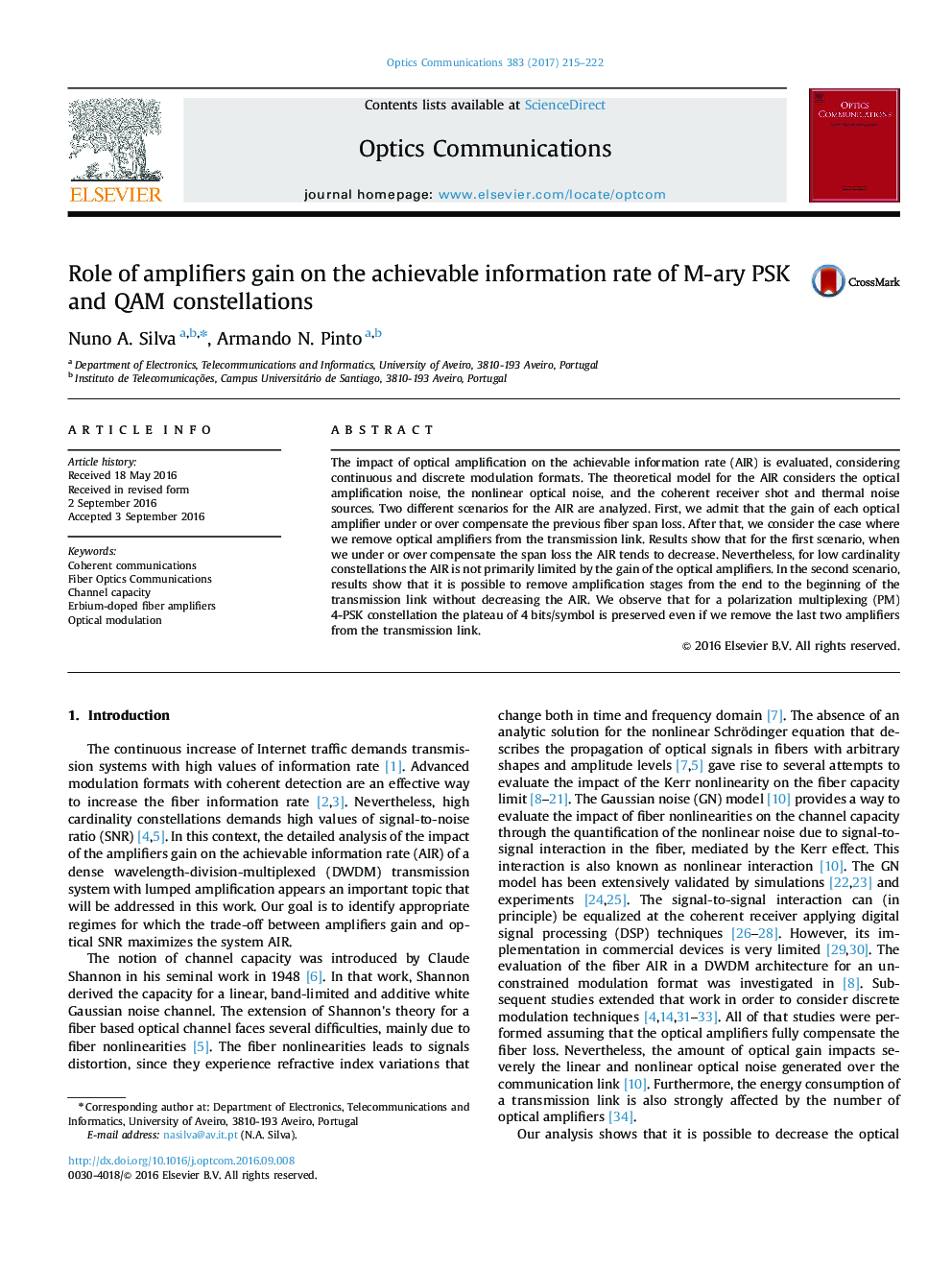| Article ID | Journal | Published Year | Pages | File Type |
|---|---|---|---|---|
| 7926831 | Optics Communications | 2017 | 8 Pages |
Abstract
The impact of optical amplification on the achievable information rate (AIR) is evaluated, considering continuous and discrete modulation formats. The theoretical model for the AIR considers the optical amplification noise, the nonlinear optical noise, and the coherent receiver shot and thermal noise sources. Two different scenarios for the AIR are analyzed. First, we admit that the gain of each optical amplifier under or over compensate the previous fiber span loss. After that, we consider the case where we remove optical amplifiers from the transmission link. Results show that for the first scenario, when we under or over compensate the span loss the AIR tends to decrease. Nevertheless, for low cardinality constellations the AIR is not primarily limited by the gain of the optical amplifiers. In the second scenario, results show that it is possible to remove amplification stages from the end to the beginning of the transmission link without decreasing the AIR. We observe that for a polarization multiplexing (PM) 4-PSK constellation the plateau of 4Â bits/symbol is preserved even if we remove the last two amplifiers from the transmission link.
Keywords
Related Topics
Physical Sciences and Engineering
Materials Science
Electronic, Optical and Magnetic Materials
Authors
Nuno A. Silva, Armando N. Pinto,
